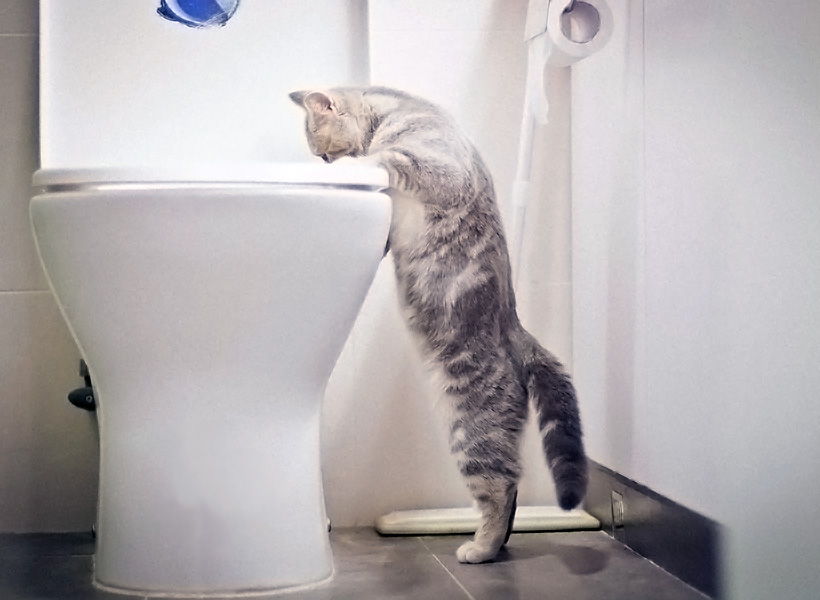Avoid Flush Cat Poop Down Your Toilet - Preserve Your House's Pipe System
Avoid Flush Cat Poop Down Your Toilet - Preserve Your House's Pipe System
Blog Article
Right here in the next paragraph you can discover a lot of sensible data related to How to Dispose of Cat Poop and Litter Without Plastic Bags.

Introduction
As cat owners, it's necessary to be mindful of how we deal with our feline pals' waste. While it may seem convenient to purge feline poop down the bathroom, this practice can have detrimental effects for both the setting and human health and wellness.
Alternatives to Flushing
Thankfully, there are safer and extra accountable ways to deal with cat poop. Consider the following options:
1. Scoop and Dispose in Trash
One of the most common technique of getting rid of pet cat poop is to scoop it into an eco-friendly bag and toss it in the trash. Make certain to utilize a dedicated trash inside story and throw away the waste promptly.
2. Use Biodegradable Litter
Go with biodegradable feline trash made from products such as corn or wheat. These clutters are environmentally friendly and can be safely taken care of in the trash.
3. Bury in the Yard
If you have a lawn, take into consideration hiding pet cat waste in a marked location far from veggie yards and water resources. Make certain to dig deep adequate to stop contamination of groundwater.
4. Mount a Pet Waste Disposal System
Purchase a family pet garbage disposal system particularly developed for cat waste. These systems use enzymes to break down the waste, reducing smell and environmental impact.
Health Risks
Along with environmental concerns, purging feline waste can also posture health and wellness risks to human beings. Feline feces might consist of Toxoplasma gondii, a parasite that can trigger toxoplasmosis-- a potentially serious illness, specifically for pregnant females and individuals with weakened body immune systems.
Environmental Impact
Purging pet cat poop introduces unsafe pathogens and bloodsuckers right into the supply of water, presenting a substantial risk to water ecosystems. These contaminants can negatively affect aquatic life and concession water top quality.
Conclusion
Responsible family pet possession expands beyond offering food and sanctuary-- it likewise entails proper waste management. By refraining from flushing cat poop down the toilet and choosing alternative disposal methods, we can minimize our ecological impact and secure human health and wellness.
Why Can’t I Flush Cat Poop?
It Spreads a Parasite
Cats are frequently infected with a parasite called toxoplasma gondii. The parasite causes an infection called toxoplasmosis. It is usually harmless to cats. The parasite only uses cat poop as a host for its eggs. Otherwise, the cat’s immune system usually keeps the infection at low enough levels to maintain its own health. But it does not stop the develop of eggs. These eggs are tiny and surprisingly tough. They may survive for a year before they begin to grow. But that’s the problem.
Our wastewater system is not designed to deal with toxoplasmosis eggs. Instead, most eggs will flush from your toilet into sewers and wastewater management plants. After the sewage is treated for many other harmful things in it, it is typically released into local rivers, lakes, or oceans. Here, the toxoplasmosis eggs can find new hosts, including starfish, crabs, otters, and many other wildlife. For many, this is a significant risk to their health. Toxoplasmosis can also end up infecting water sources that are important for agriculture, which means our deer, pigs, and sheep can get infected too.
Is There Risk to Humans?
There can be a risk to human life from flushing cat poop down the toilet. If you do so, the parasites from your cat’s poop can end up in shellfish, game animals, or livestock. If this meat is then served raw or undercooked, the people who eat it can get sick.
In fact, according to the CDC, 40 million people in the United States are infected with toxoplasma gondii. They get it from exposure to infected seafood, or from some kind of cat poop contamination, like drinking from a stream that is contaminated or touching anything that has come into contact with cat poop. That includes just cleaning a cat litter box.
Most people who get infected with these parasites will not develop any symptoms. However, for pregnant women or for those with compromised immune systems, the parasite can cause severe health problems.
How to Handle Cat Poop
The best way to handle cat poop is actually to clean the box more often. The eggs that the parasite sheds will not become active until one to five days after the cat poops. That means that if you clean daily, you’re much less likely to come into direct contact with infectious eggs.
That said, always dispose of cat poop in the garbage and not down the toilet. Wash your hands before and after you clean the litter box, and bring the bag of poop right outside to your garbage bins.
https://trenchlesssolutionsusa.com/why-cant-i-flush-cat-poop/

Do you enjoy reading up on Don’t flush cat feces down the toilet? Leave a remark further down. We will be glad to see your responses about this blog. We are looking forward that you visit us again in the future. Appreciated our piece? Please share it. Let another person check it out. Kudos for your time. Kindly stop by our site back soon.
Call Today Report this page